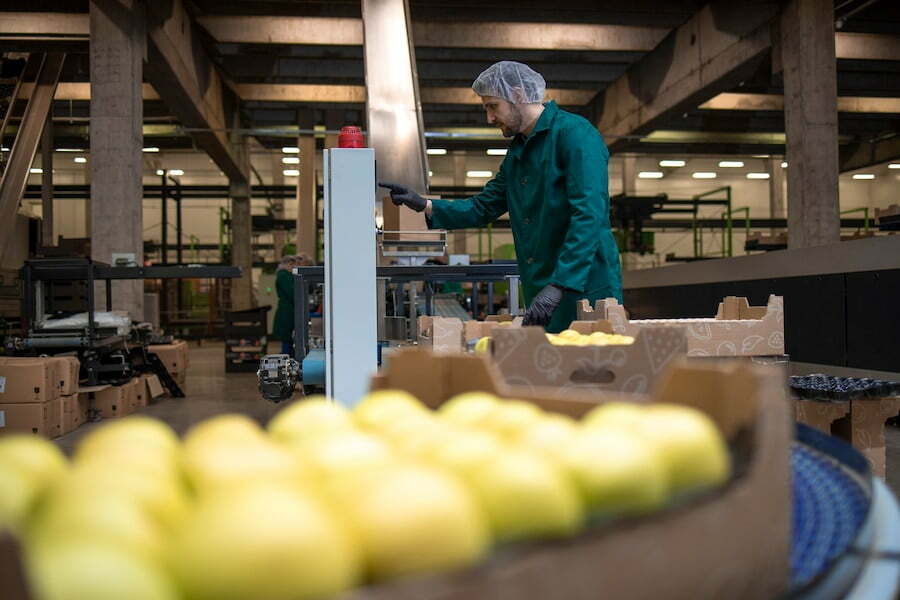
Address:
Plot No 37/1, 1st Floor, 6th Main, Hosur Rd, Singasandra, Bengaluru, Karnataka 560068

Address:
291 C Narasapura Industrial Area, Sy. No. 15, Karadubande Hosahalli Village, Narasapura Hobli, Kolar Taluk, Karnataka - 563133
The consumer demand for cold storage is expected to grow by 4.5 percent by 2023. This puts food producers under a lot of pressure to analyze where their products come from and where they end up. Consumers start turning to these supply chain nodes for consumption as the distance between the store and the consumer increases.
Today’s cold storage chain experts can benefit from sophisticated automation software, innovative fulfillment design and a vast network to manage their operations. A chain of food suppliers, storage facilities, transportation companies, and distributors ensure that frozen food gets delivered to the right people. Factors such as their operational requirements and the building design of a cold storage operation must be looked into when automating their facility.
Frozen food supply is highly reliant on management of the freezing and defrosting processes. Products are carefully monitored, right from the farm to the end-user. The most prevalent refrigerated and frozen storage facilities are:
Sometimes, pre-production facilities are located near the raw material sources. These materials are then transported to a hub which serves a larger consumer base.
Merchants and producers can benefit from a distribution hub. Equipment for packaging automation and sorting is used in distribution and pre-production facilities.
The product is then stored in a post-production facility until needed. Post-production facilities are positioned near markets to ensure easy access and fresh commodities.
However, the cold storage industry has been plagued with inefficiencies. Not all significant production sources or raw materials can be located close to key markets, nor can all manufacturers be scattered. These facilities also utilize more energy than conventional industrial spaces. Walmart, for instance, has reported that refrigeration systems consume 30-50 percent of total energy. However, refrigerated warehouses need an average of 24.9 kWh of power per square foot per year compared to traditional warehouses, which use around 6.1 kWh per year.
Automating material handling has the potential to revolutionize the future of the cold chain and help improve an inefficient supply chain while also saving costs.
The cold storage industry has been steadily outpacing the population growth rate, with researchers predicting sales of frozen products to rise even further in 2022. With the pandemic and the subsequent lockdown, sales of frozen foods rose to as much as 70%. This increased the need for state-of-the-art automation technologies to streamline cold food storage.
This drastic increase in sales of frozen foods means that cold food storage providers have to increase their focus on delivering convenience, quality, relevance, and variety. Providers need to:

There are numerous benefits to companies which use automation to replace workers in temperature-controlled warehouses and distribution hubs.
A few of those benefits are:
Operating costs can be lowered through increased productivity and efficiency, reduction of the environmental footprint, lowering of energy consumption, optimization of floor space utilization and reduction of temporary labor among others.
Workforce Retention will be ensured when automation takes care of the exhausting and repetitive duties performed by employees. For instance, personnel can spend less time outside in the cold if a facility has automated heating and cooling systems. Workers can be reassigned to perform less physically demanding and more ergonomically sound tasks. Automation also makes it easier for companies to offer more competitive pay, which will help them attract and retain talent.
Automation frees up managers to spend more time on streamlining processes rather than managing individuals, leading to higher customer satisfaction.
Extending the shelf life of consumables and bridging the divide between consumers and producers have always posed significant challenges for organizations. The food and grocery sectors need to meet stringent timeframes for order fulfillment, which have now gone down from a few days to the same day. For your business to remain competitive, reduce loss of produce and maximize the value of your cold storage facility investment, you need to strategize. Pallets and wheels, which can quickly be broken if not adequately cold-rated or routinely examined, take a beating in chilly surroundings. The careful design of supporting components becomes essential.
Inlogsys’ automated storage and retrieval systems (ASRS) can help you maximize your storage capacity, handle picking assignments of multiple operators, improve pick accuracy and throughput.
Get in touch with us and embrace the future of intralogistics with cutting-edge storage design, warehouse management and software-enabled materials handling management.

Plot No 37/1, 1st Floor, 6th Main, Hosur Rd, Singasandra, Bengaluru, Karnataka 560068

291 C Narasapura Industrial Area, Sy. No. 15, Karadubande Hosahalli Village, Narasapura Hobli, Kolar Taluk, Karnataka - 563133

88842 22240

